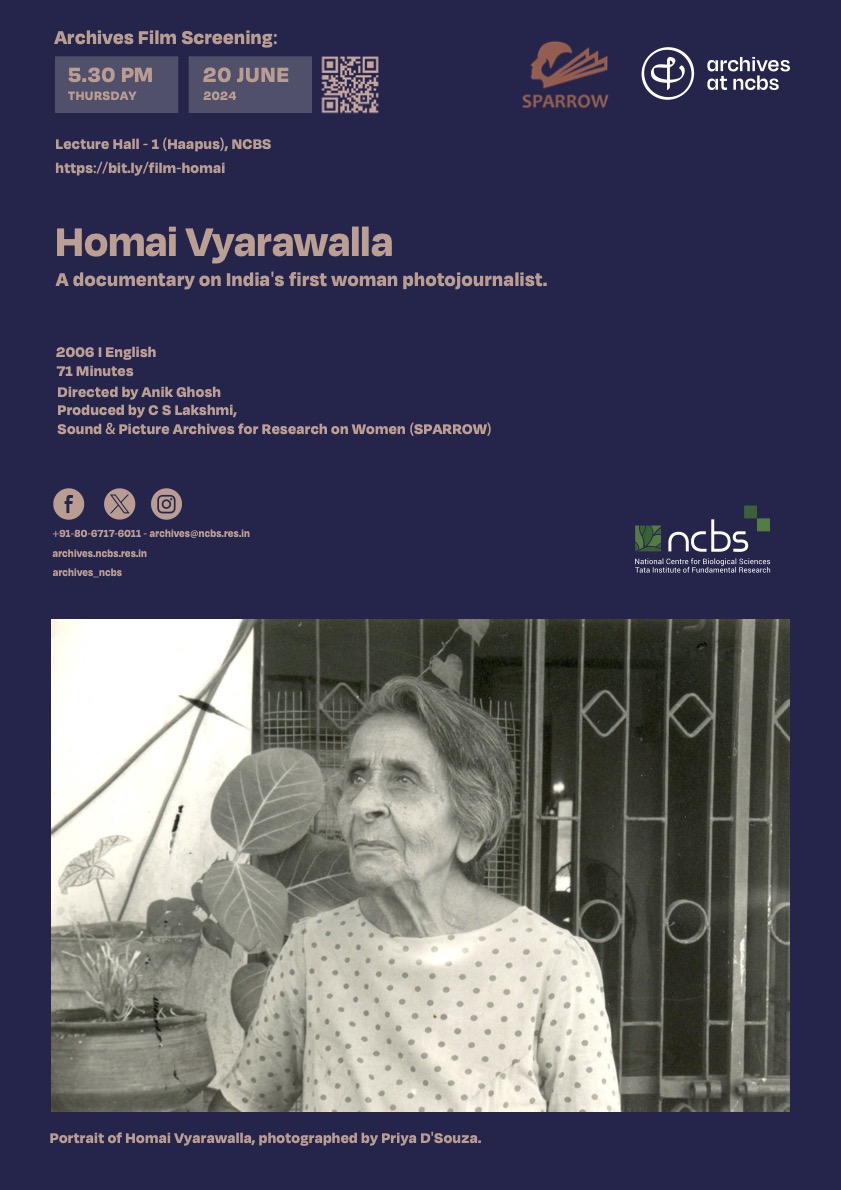Film Screening: Homai Vyarawalla
Archives at NCBS | Film Screening
Homai Vyarawalla
A film by Sound and Picture Archives for Research on Women (SPARROW), produced by CS Lakshmi and directed by Anik Ghosh
Thursday, June 20, 2024. 5:30pm
Lecture Hall – 1 (Haapus), NCBS
2006 | English
71 minutes
Details: https://bit.ly/film-homai

Synopsis: "President Ayub Khan, he was a tall healthy handsome man, and our Panditji looked like a baby in front of him. I didn't want him to appear short. I wanted to take a low-angle shot from the ground so that he could be raised in his stature. As I tried to do so, Ayub Khan saw me take photos from between the legs of the male photographers. He thought the other menfolk weren't allowing me to take a photograph and hence I was doing so. He turned around to Pandit Nehru and said, 'How uncourteous these gentlemen are, they're not allowing this lady to take a picture,' and Nehru responded, 'No, that's her style of taking a picture!'"
This 2006 documentary offers a glimpse into the life of Homai Vyarawalla, often cited as India’s first woman photojournalist. The film shows us Vyarawalla in conversation with the scholar and filmmaker Sabeena Gadihoke at the former's home in Baroda, recollecting her experiences of growing up, education, navigating photojournalism as one of the very few women in the field, technical expertise, and stories behind some of her favourite photographs and subjects.
Born in 1913, Vyarawalla attended the JJ School of Art and began her career as a photographer in the late 1930s. Her photographs – appearing in the Bombay Chronicle, IIlustrated Weekly, and later, in Time, Life, and other international publications – captured everyday Indian life, public figures like Jawaharlal Nehru, Queen Elizabeth and Zhou Enlai, and historic events like the flag hoisting ceremony at the Red Fort on August 15, 1947. Many of her photos were published under the pseudonym "Dalda 13". She retired in 1970, and in 2011 she was awarded the Padma Vibhushan.


